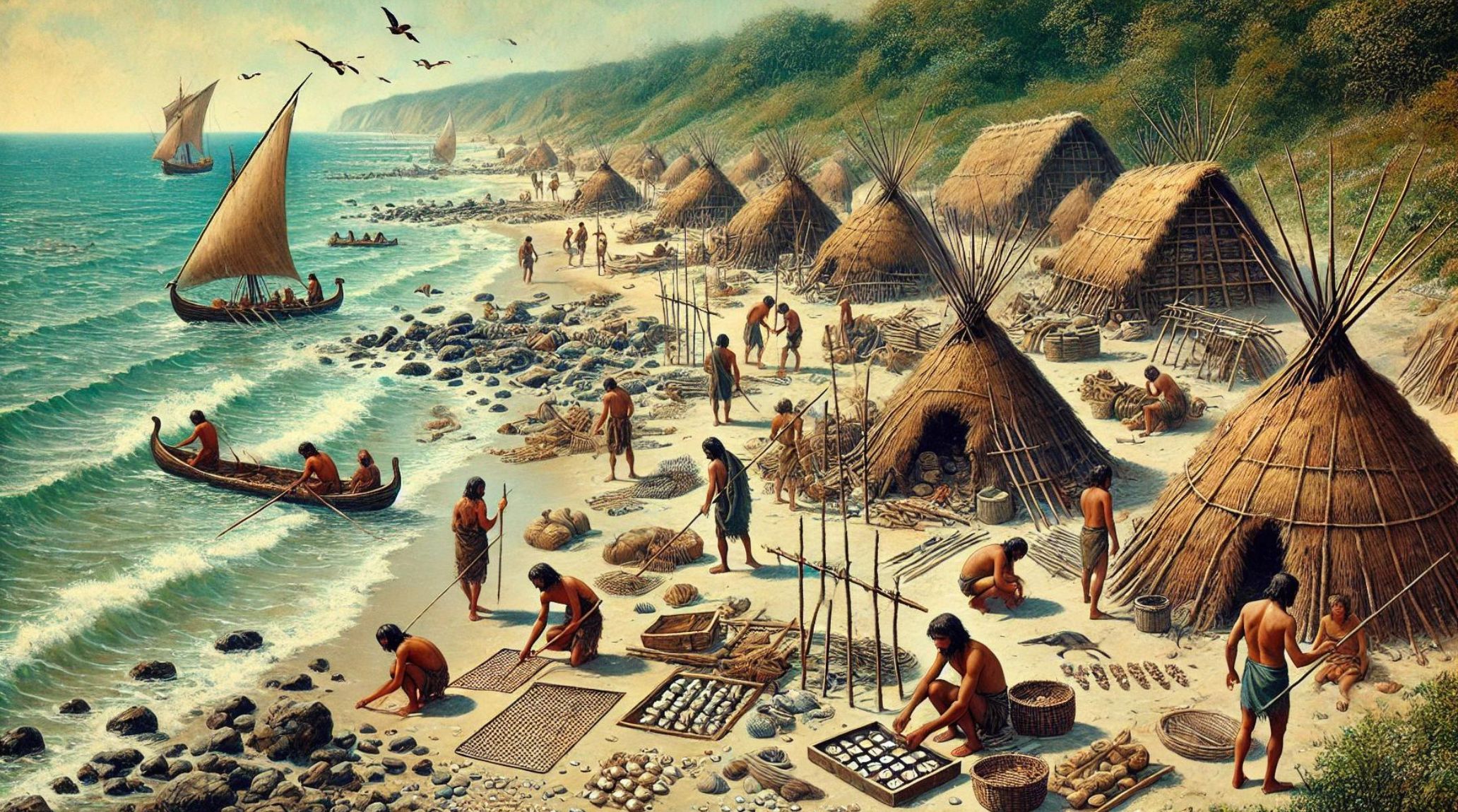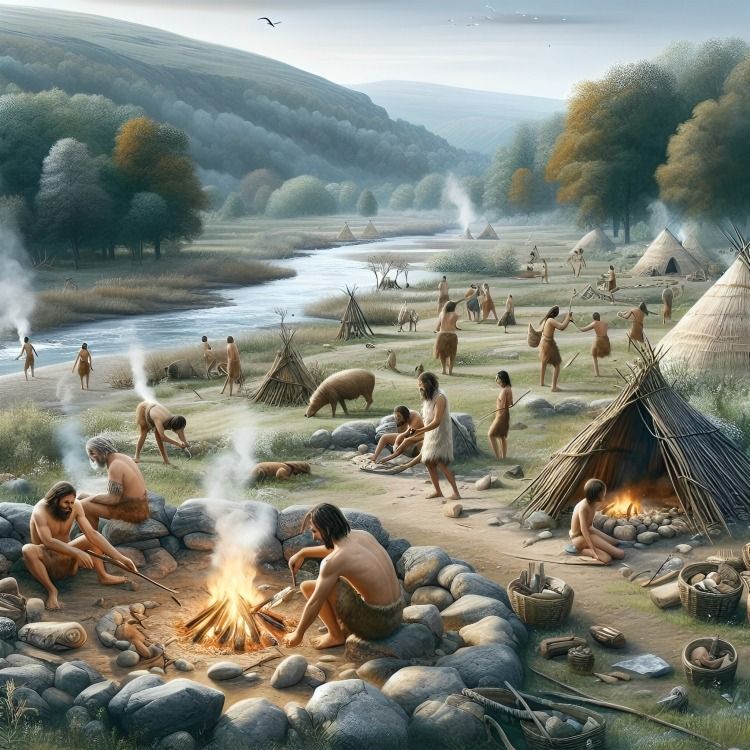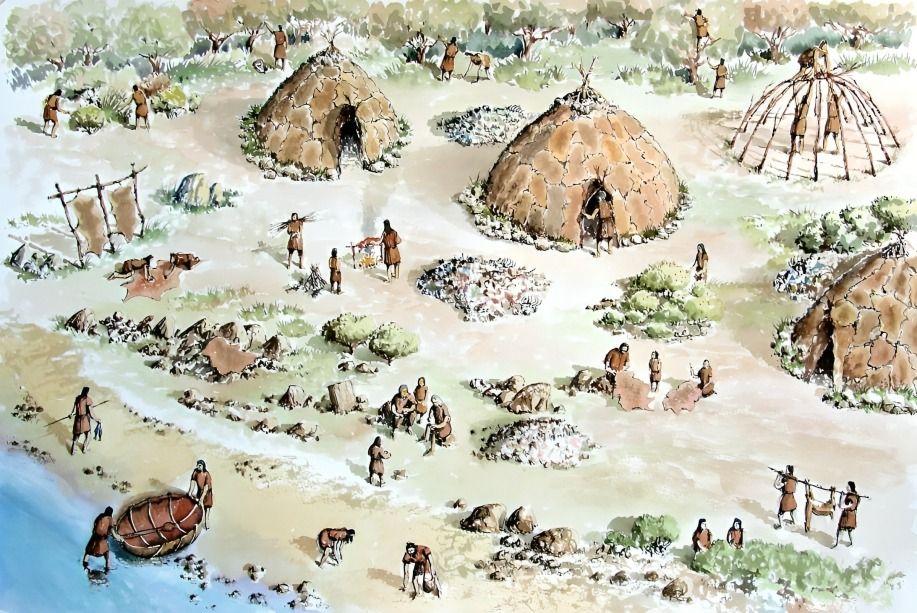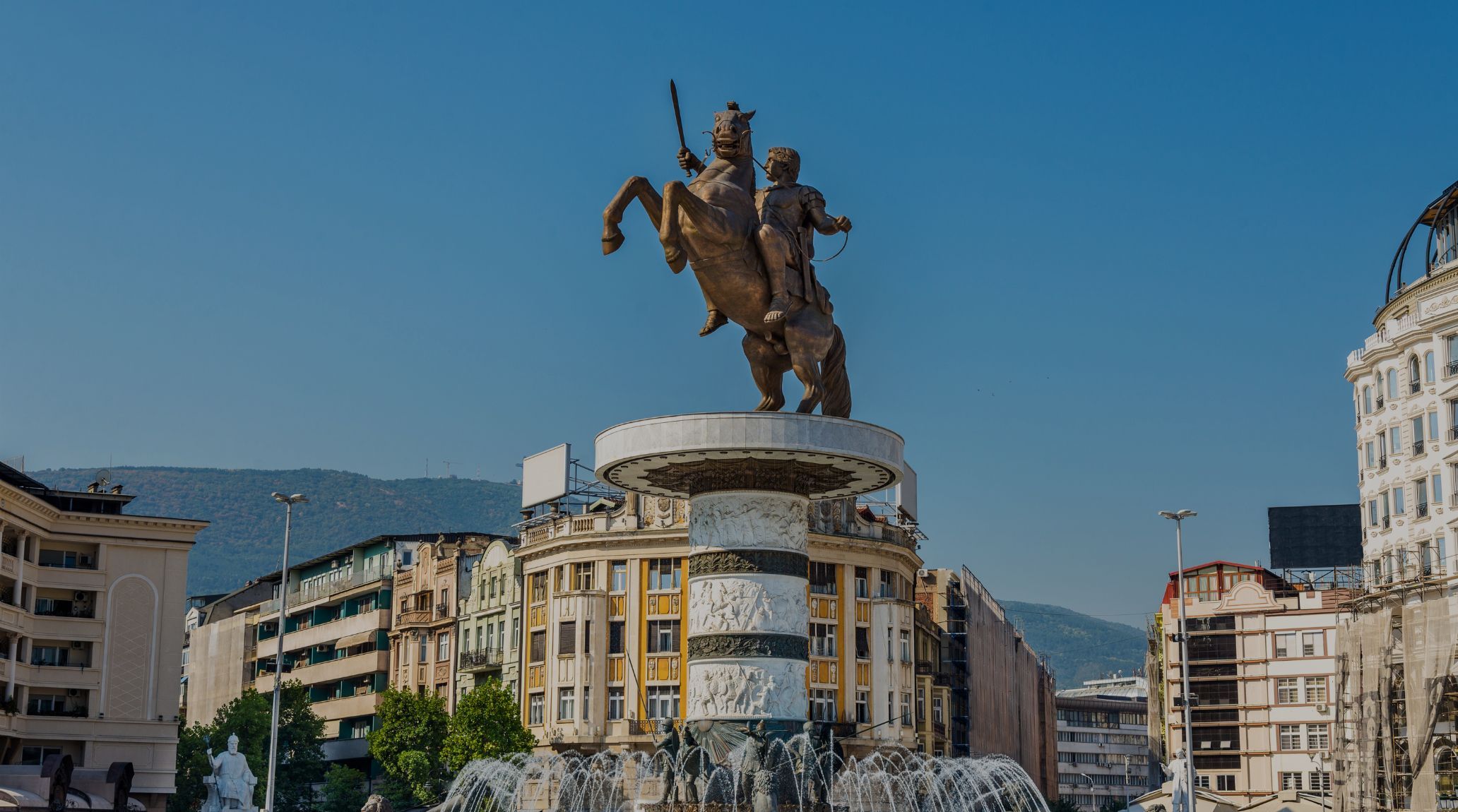
“
Mesolithic coastal communities were pioneers of maritime survival, honing skills in fishing, foraging, and tool-making. These early seafarers adapted to the coastal environment by utilizing marine resources and developing innovative survival strategies. Discover 20 Intriguing Facts About Mesolithic Coastal Communities and Their Maritime Adaptations.1
1
”

Mesolithic coastal communities relied heavily on marine resources such as fish, shellfish, and sea mammals, providing a stable food supply, especially during colder months.
They developed advanced fishing techniques, including nets, fish traps, and bone hooks, allowing them to efficiently harvest fish from coastal waters and rivers. 1
Large accumulations of discarded shells, known as shell middens, are common near Mesolithic coastal sites, offering clues to the diet and habits of these early communities. 2
Early forms of watercraft, such as dugout canoes, were used by Mesolithic peoples to travel along coastlines, access fishing grounds, and explore new areas. 3
Mesolithic communities often settled near estuaries, lagoons, and coastal plains, which provided rich resources and strategic advantages for hunting, gathering, and fishing. 4
Many coastal groups practiced seasonal mobility, moving between inland and coastal regions, allowing them to exploit different resources at different times of the year.5
Seaweed and other marine plants were commonly gathered and used as food by coastal communities, providing valuable nutrients that supplemented their diet. 6
Tools made from bones, stones, and shells were essential for fishing, hunting, and gathering. Harpoons, scrapers, and knives were crafted to process marine animals and other resources. 7
In addition to fishing, Mesolithic peoples foraged along the coastlines for edible plants, crabs, and shellfish, diversifying their food sources and increasing resilience. 8

Mesolithic coastal communities had to adapt to rising sea levels as the Ice Age ended, forcing them to relocate settlements or develop new survival strategies.
Seals, dolphins, and other marine mammals were hunted by some coastal groups, and their meat, fat, and bones were used for food, fuel, and tool-making. 9
Coastal areas were often hubs of interaction where different Mesolithic groups exchanged goods and ideas. Marine resources were traded for inland items like flint or wood. 10
Some Mesolithic coastal communities left behind rock art and engravings depicting marine life and hunting scenes, possibly holding ritualistic or symbolic meaning. 11
Mesolithic people practiced sustainable hunting and gathering by exploiting seasonal abundance and avoiding over-harvesting, maintaining the balance of their ecosystems.12
Coastal Mesolithic communities are known to have domesticated dogs, which likely assisted in hunting and guarding settlements, serving as invaluable companions. 13
Shells were crafted into jewelry and decorative items, holding possible social or ritual significance in Mesolithic communities beyond their use as food. 14
Some coastal Mesolithic communities buried their dead near shorelines, with burial mounds and grave goods suggesting ritualistic practices linked to the sea. 15
The diet of coastal Mesolithic people included a broad range of foods, from fish and shellfish to land animals and plants, ensuring their survival and adaptability. 16
Evidence suggests some Mesolithic coastal peoples developed rudimentary navigation skills, exploring nearby islands or crossing water using simple watercraft. 17
Mesolithic coastal communities had a limited impact on their environment, practicing sustainable use of resources that allowed coastal ecosystems to thrive for millennia. 18


